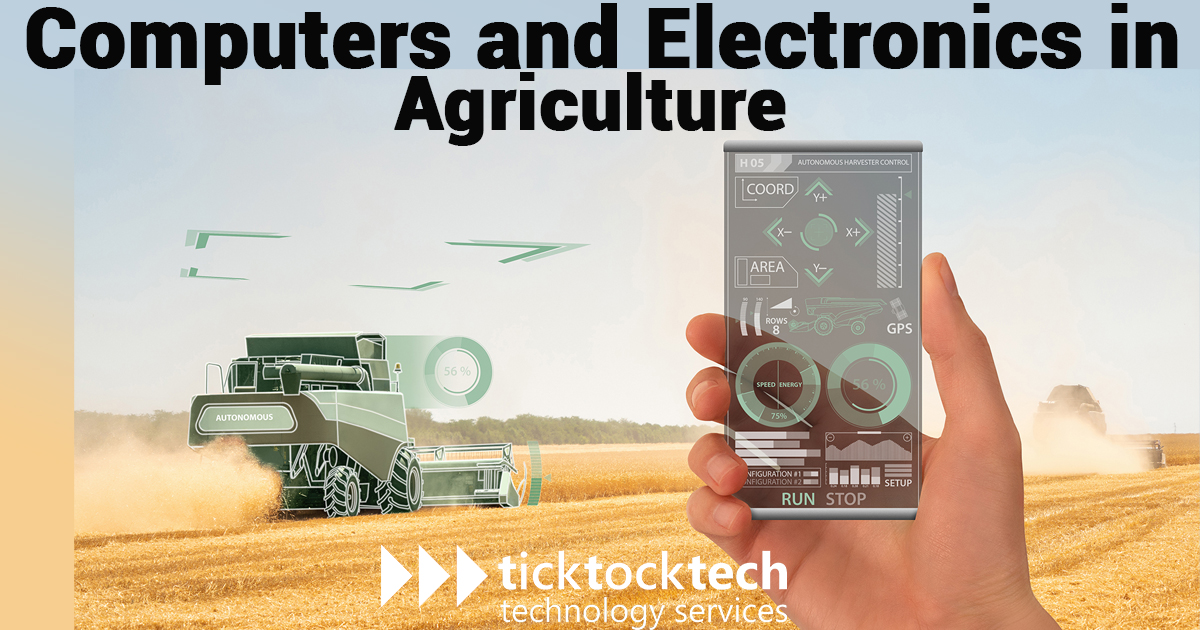Computers and electronics in agriculture have revolutionized our approach toward farming and food production. In recent years, there has been an increased focus on sustainable and efficient food production methods, and computers and electronics have played a crucial role in agriculture. By utilizing these technologies, farmers can collect and analyze data on factors such as soil health, weather conditions, and pest infestations, allowing for more informed decision-making and targeted interventions.
Applications of Computers and Electronics in Agriculture
Here are some key ways in which computers and electronics are instrumental in agriculture:
1. Precision Agriculture
Precision agriculture means using computers and electronic technologies to optimize crop growth and increase the efficiency of farming operations. This approach involves collecting and analyzing data on factors such as soil health, weather conditions, and pest infestations, allowing farmers to make more informed decisions to manage crops. One key aspect of precision agriculture is GPS technology and sensors. These technologies help farmers to create detailed maps of their fields to identify areas experiencing problems such as soil nutrient deficiencies or pest infestations. This information helps to target specific interventions, such as applying fertilizers or pesticides only to the areas needed rather than blanket treating an entire field.
2. Crop Monitoring and Disease Prevention
Crop monitoring and disease prevention is a crucial aspect of modern agriculture, and how computers and electronics have revolutionized agriculture. One way in which these technologies are used for crop monitoring is through the use of drones. Drones with cameras and sensors can fly over fields and gather high-resolution images and data on crops. This data can identify signs of disease or pests, and allow farmers to take timely and targeted actions. One additional way in which computers and electronics help in crop monitoring and disease prevention is through the use of smart greenhouses. These greenhouses are equipped with many sensors and other electronic devices that collect data on factors such as temperature, humidity, light levels, and soil moisture. This data help to optimize the growing conditions for crops, helping to improve their health and reduce the risk of diseases and pests.
3. Irrigation Management
Irrigation management refers to the use of computers and electronics to optimize the use of water in agriculture. In many parts of the world, water is a precious resource that must be used efficiently to produce crops. By using sensors and smart irrigation systems, farmers can monitor soil moisture levels and adjust the amount of water applied to crops accordingly. Smart irrigation systems use sensors to gather data on soil moisture levels and other factors that affect plant growth, such as temperature and humidity. This data help to calculate the optimal amount of water applied to crops. Smart irrigation systems can be programmed to automatically adjust the amount of water applied based on the data collected by the sensors to ensure that crops receive the right amount of water without wasting any.
4. Livestock Management
In the area of livestock management, computers and electronics are applied in a variety of ways. For example, sensors and smart ear tags can be used to track the health and movement of livestock, allowing farmers to identify any issues and take timely action to address them. This can include monitoring factors such as heart rate, body temperature, and activity levels, which can provide early warning signs of illness or other problems.
Electronic technologies are also used to monitor the feeding and watering of livestock to ensure that animals are receiving adequate nutrition. This can be particularly important in large-scale operations where it is difficult to monitor the needs of individual animals. In addition, computers and electronics automate the management of livestock facilities. For example, smart barns equipped with sensors and automated systems control the temperature, lighting, and ventilation of livestock housing, helping to improve the health and well-being of the animals.
5. Automation of Farming Tasks
The use of robotics in agriculture has automated many farming tasks to improve the efficiency and productivity of farming operations. For example, robots can plant seeds, apply fertilizers and pesticides, and harvest crops. These tasks are often repetitive and labor-intensive, and robots help farmers reduce the time and resources they need to devote to these tasks. Robotics in agriculture can also help reduce the risk of injuries and accidents, as robots can perform tasks that can be dangerous or physically demanding for humans. For example, robots can spray pesticides and carry out tasks that expose farmers to harmful chemicals and increase the risk of injury.
Conclusion – Computers and Electronics in Agriculture
In summary, the use of technology in agriculture has greatly improved the efficiency, freshness, and cost-effectiveness of the industry. As technology advances, we can expect to see even more innovative solutions that will help sustainably feed the growing population and support the economic viability of the agriculture industry. In the future, we can expect to see an increasing level of computers and electronics in agriculture. This will embrace and leverage technology to meet the needs of a new society.

